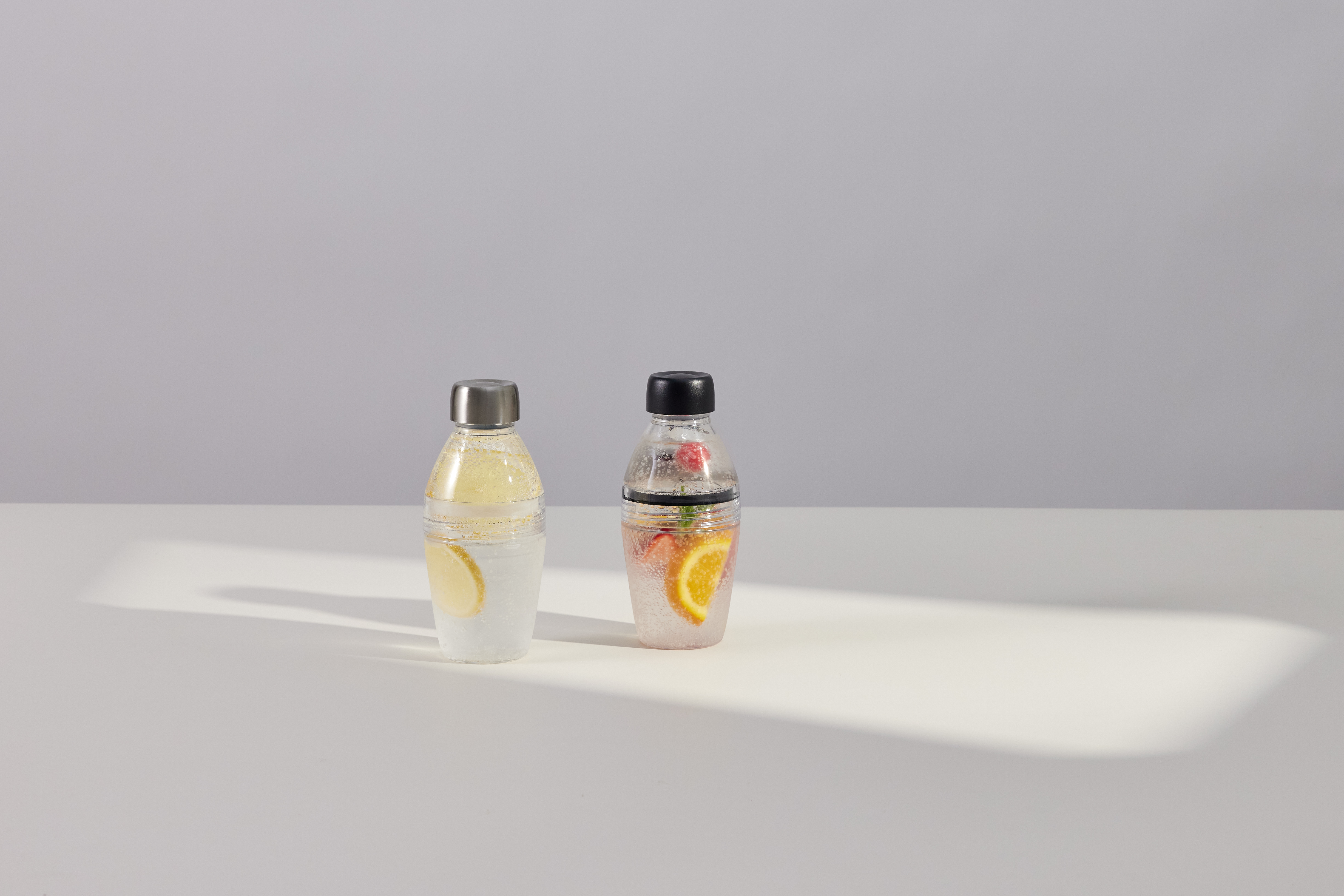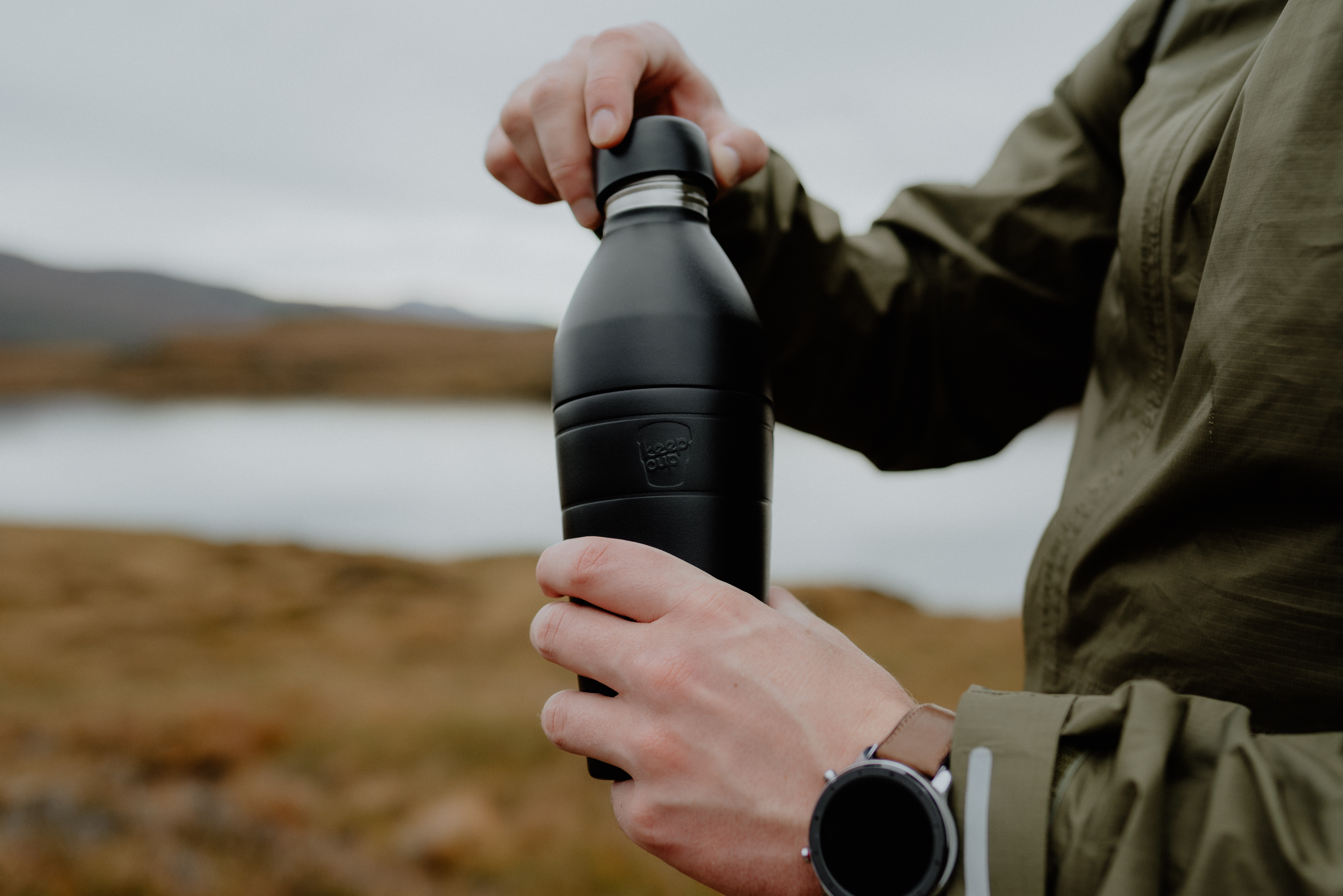
It’s been a wild old ride since Abigail Forsyth co-founded KeepCup in 2009, with more than 10 million of the reusable cups sold in 65 countries.
In 2017, the team had to hold on for dear life when business doubled overnight after an episode of the ABC program War on Waste looked at the environmental impact of single-use coffee cups.
But the opposite happened when the pandemic hit, with sales immediately plummeting by half as many cafes banned the cups, and caffeine habits changed due to remote working.
The worst bit? The business didn’t get its new, pandemic-proof product, the KeepCup Bottle, out fast enough.
Forsyth explains this failure to launch to SmartCompany Plus, and how the business is getting back on track.
The mistake
In 2020, KeepCup had big plans for a new product, a two-in-one screw-fit cup and water bottle.
“So you can have your coffee in the morning and then rinse it out and fill it with water in the afternoon,” says Forsyth.
“It was designed for travelling light, and when you travel light you don’t want to have to take a reusable coffee cup and a reusable water bottle.”

The KeepCup bottle is designed to use at all times of day. Source: supplied.
The product was set to launch in February 2021, until the team came to the delayed realisation that they’d made an error in designing the lid (they wanted to use a metal skin, rather than plastic, but it wasn’t successful).
When the prototype came out Forsyth says they realised it was “very cumbersome, very difficult to tool — and we had to go back to the drawing board”.
“We changed the materials we were going to use, but we didn’t change the design to reflect that change in materials.”
Forsyth says there was plenty of money invested in the design.
“But the biggest mistake is the opportunity cost of the time, because we’ve had a reusable cup for a whole year when no one’s using reusable cups and had we had the bottle, we would have had a whole new market to talk to,” she laments.
“When people were out walking during the lockdown, it would have been fantastic, so it’s been a pretty costly mistake.”
The context
KeepCup is based in Melbourne, the coffee-loving capital that experienced one of the world’s longest lockdowns.
With closed signs up on many cafes and retail stockists during this time, and people no longer going for a cuppa with their colleagues, it was a tough ask for a business relying on just one type of product.
“We were a bit flatfooted on the pivot. It’s not for want of trying though; we were almost there and then it was like, oh my goodness,” says Forsyth.
Like many businesses, KeepCup had to adapt to remote working, and Forsyth says this was likely part of the problem.
“I’d say it was partly the lockdown and not having those face-to-face meetings to align a bit more clearly on what we were doing.”
With the steel elements of the 52-part product made in China, Forsyth says travel restrictions — combined with supply chain issues and skyrocketing freight costs — also played a part.
“Because we design all our own products from scratch, we would have gone over to China for that first production, and looked at those things, but we couldn’t get over there to do that.”
Meanwhile, the business shut down its US office at the start of the pandemic to try and minimise job losses back in Australia. KeepCup currently has 55 staff in Melbourne, and another 20 in the UK.
The impact
The new product, the KeepCup Bottle, finally launched this March — 13 months after it was originally planned.

The new product launched in March 2022. Source: supplied.
Of the opportunity cost caused by the delays, Forsyth says: “I can’t think about it, but it’s significant.”
“The other thing is, even though water bottles are a much more competitive market, it’s four times the size (compared to reusable cups).”
Forsyth says not having a new product to talk about during the worst of the pandemic has also led to a loss in brand traction. “Our brand voice is not as strong as it was two years ago.”
The ramifications of the setback are still being felt in the team to some degree, Forsyth says.
“We all thought it was going to launch in 2021, and then you’ve got to sort of regroup and start again.
“Everyone’s holding their breath for something that doesn’t happen and takes an enormous amount of resources inside a small business like KeepCup to launch something.
“Everyone gets distracted trying to do this one thing, and you take your eye off other parts of the business that need attention.”
The lesson
So what would Forsyth do differently if she had her time again (and had a crystal ball telling her how long the pandemic would last)?
“I would have dedicated a lot more resource to getting this over the line,” she says.
Forsyth admits some project management basics fell down while developing the KeepCup Bottle, and efforts have since been made to work on this throughout the business.
Another top priority is branching out from just offering many variations of the same product, as KeepCup did prior to the world turning upside down.
“We’ve got to rapidly expand our portfolio of products now to be a bit more robust as a business,” says Forsyth.
KeepCup is also focusing on becoming a more digital-based business, and launching a new marketing campaign.
While it was a pioneer in the reusable space, Forsyth says people often use ‘KeepCup’ interchangeably when referring to any type of reusable cup.
“In some ways that’s amazing because we’ve created this new category, but in other ways it’s been a bit of a challenge because we’re losing our brand voice in there.”
Forsyth says she “can barely believe” the new product has launched, and hopes it will help KeepCup reassert itself as a business.
Amid the dramatic ups and downs, Forsyth says it’s been a lesson “that business is like surfing”.
“A certain amount of it’s out of your control and it’s just how you ride the waves.”


COMMENTS
SmartCompany is committed to hosting lively discussions. Help us keep the conversation useful, interesting and welcoming. We aim to publish comments quickly in the interest of promoting robust conversation, but we’re a small team and we deploy filters to protect against legal risk. Occasionally your comment may be held up while it is being reviewed, but we’re working as fast as we can to keep the conversation rolling.
The SmartCompany comment section is members-only content. Please subscribe to leave a comment.
The SmartCompany comment section is members-only content. Please login to leave a comment.